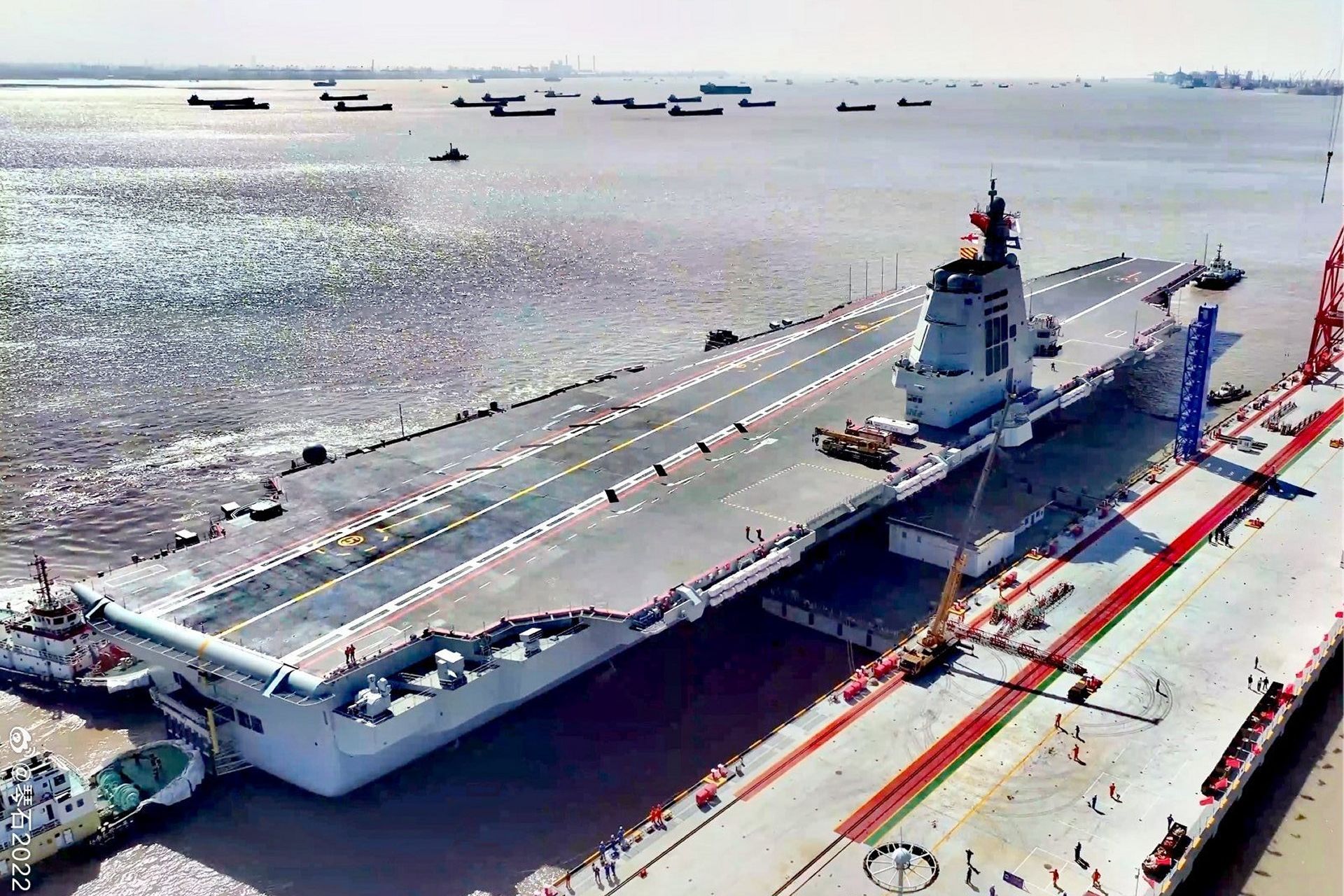Breaking News
Rare photos surface of China's Fujian aircraft carrier after first sea trials.
According to information published by @Rupprecht_A on August 21, 2024, recent images have surfaced, offering a rare perspective on the Chinese People's Liberation Army Navy's third aircraft carrier, the Fujian.
Follow Army Recognition on Google News at this link

Chinese People's Liberation Army Navy's aircraft carrier Fujian. (Picture source: @琴石2022)
This carrier, which was launched in June 2022 and began its sea trials in May 2024, marks a departure from China's previous carriers, Liaoning and Shandong, which were based on older Soviet designs. The Fujian is notable for being the first Chinese carrier equipped with an Electromagnetic Aircraft Launch System (EMALS), similar to that found on the U.S. Navy’s Gerald R. Ford class carriers.
With a displacement of around 80,000 tons, the Fujian is larger and more capable than its predecessors, which used ski-jump ramps for aircraft launches.
EMALS allows the Fujian to launch a broader range of aircraft, including heavier planes such as the KJ-600 airborne early warning aircraft, while also enabling aircraft to take off with heavier payloads. This technology enhances the combat potential of the carrier's air wing, which is expected to include advanced versions of the J-15 and the next-generation J-35 stealth fighters.
The Fujian is currently undergoing a series of rigorous sea trials aimed at testing its propulsion systems, power generation, and integrated combat systems.
These trials are expected to continue into 2025, with full operational capability likely to be achieved shortly thereafter. The PLAN's focus on developing the Fujian underscores China's ambitions to expand its naval power projection capabilities, with plans for further carriers potentially leading to a fleet of six by the mid-2030s.
Comments
By 2027, China aims to deploy three carrier battle groups, including the Fujian, in strategic positions around Taiwan. These carriers would likely be stationed in the northeastern, southeastern, and southwestern waters around the island, creating a multi-front blockade that could isolate Taiwan and prevent any external military support.
The Fujian's ability to operate in the Philippine Sea, well beyond the range of Taiwan's shore-based anti-ship missiles, would be crucial in sustaining a prolonged naval blockade.
This would make it challenging for Taiwanese and allied forces to counter Chinese naval and air operations effectively. Additionally, by positioning carriers east of Taiwan, China could complicate U.S. military efforts to intervene by threatening U.S. forces operating from Guam and other bases in the Western Pacific.


























